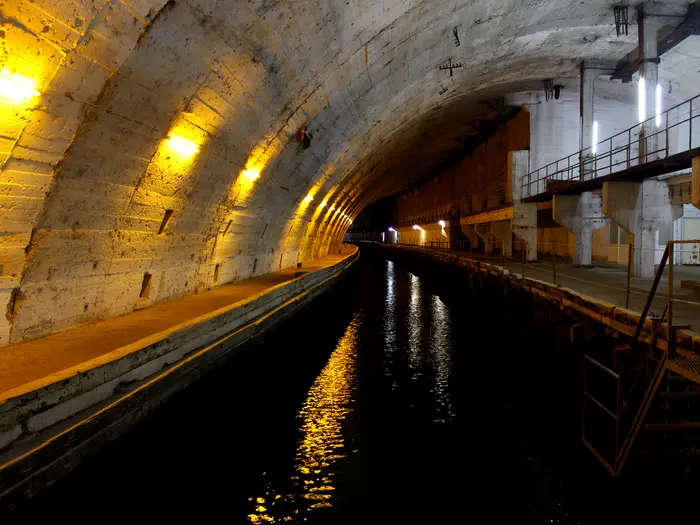The Hidden Soviet Base in Balaklava
- Emily

- Jul 29, 2021
- 3 min read
Located in Balaklava, Russia lies a former top-secret military base. Of the Soviets of course. It was even believed to be virtually indestructible and able to withstand a direct hit of about 100 kilotons by a nuclear bomb, roughly five times the power of the bomb that was dropped on Hiroshima, which I wouldn't detest because it's Russia we are talking about. Even today Russia is just riddled with thousands of secrets. It's quite scary because they are capable of anything. Only 28 years ago this base was opened to the public. This Soviet-era submarine base was converted into a museum in 2003. And since then have raised a lot of suspicion and interest.

The Location of the Naval Base Museum
Balaklava is a small oceanside town in the Crimean peninsula, part of the city of Sevastopol. A port that Russia has used to project power across the Black Sea and beyond for more than 200 years. With direct access to the sea, and hidden under a mountain, nearly 400 feet of rock to be exact, you could agree to say it was indeed a great discreet hiding spot. It was selected as the location for the USSR's naval military base because the area could not be seen from the open sea. So there were quite a few channels the submarines could escape through.
A look inside the channel of the secret base in Balaklava

However, according to The Bohemian Blog, the Crimean submarine base was not constructed until 1957, during the height of the Cold War, and until after the fall of the USSR (unlike other bases in Balaklava), the base remained in operation for years until it was decommissioned (which began in 1993). The base was built by the USSR as a site to repair and maintain the Soviet Black Sea Fleet. Under the orders of Joseph Stalin, the naval base was constructed to be ready for nuclear war at any moment. According to The Bohemian Blog, the base took four years to construct and required the stealthy removal of more than 120 tons of rock in order to make the tunnels accessible to the water. Pretty quick right?

A corridor inside the naval base at Balaklava
So in case of an attack, those inside had enough resources to last them 30 days. The base was equipped with adequate ventilation, food, fuel supply, water, and electricity for the 1,500 military personnel at the base, as well as the inhabitants of Balaklava, should a nuclear attack occur.
Each compartment of the high-security naval base was obstructed by large doors to ensure maximum security. According to Discover Ukraine, the compartments were also blocked by gates made of steel and covered in a layer of concrete. Sections of the base are connected by a nearly 2,000-foot-long deep-water canal, insane.
"When we went out to sea, we took nuclear warheads on board and were ready to use them if ordered to,"
Yury Tarariyev
Captain
Soviet Navy's 14th Submarine Division
(Now a director at the museum)

So what were the uses of this base you may ask? As an obvious, it was used for the submarines which may have been in need of repairing or storing. The base housed repair shops, storehouses for torpedoes and other weapons, command posts, anti-nuclear shelters, and administrative offices for military personnel. The base is one of the world's largest secret military objects. The Soviets really knew what they were doing. In order to enter Balaklava, all visitors, including even the family members of those who worked at the base, needed "extensive documentation".

The very last Russian submarine was removed from Balaklava Bay in 1996, five years after the fall of the Soviet Union. And after the base was abandoned, many people forgot about the eerie symbol of the militaristic USSR. Balaklava was now unrestricted, and those who moved to the town had little knowledge of the underground base. However, some managed to sneak down into the abandoned base and explore. Like I would do because I'm sure those who had some knowledge had a whack load of questions.
The submarine base finally opened to the public in the summer of 2003, which is now known as the Balaklava Naval Museum Complex.



Military objects inside the naval base at Balaklava


Comments